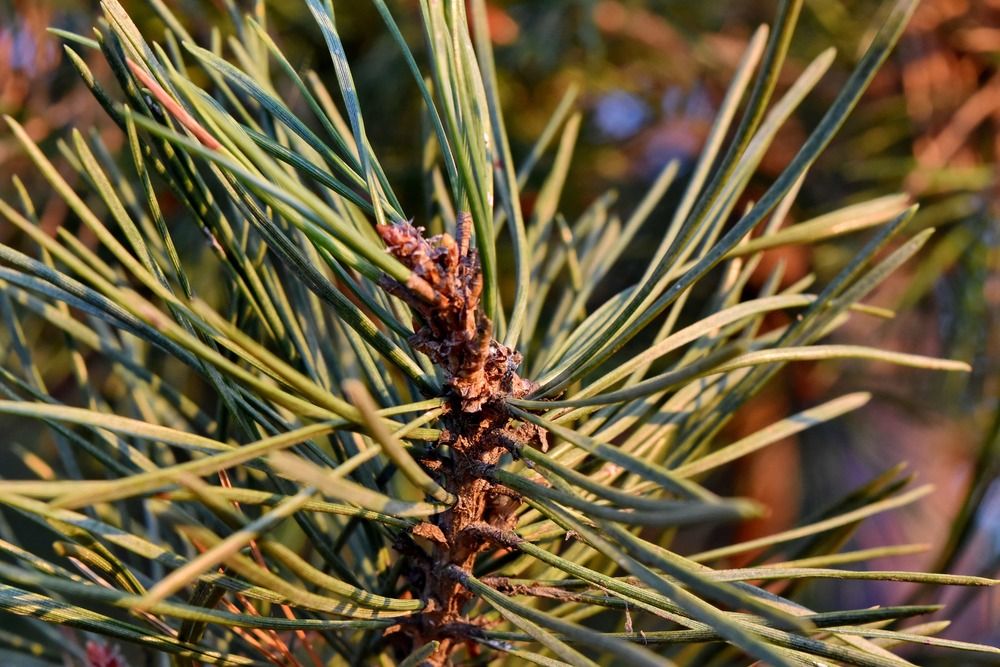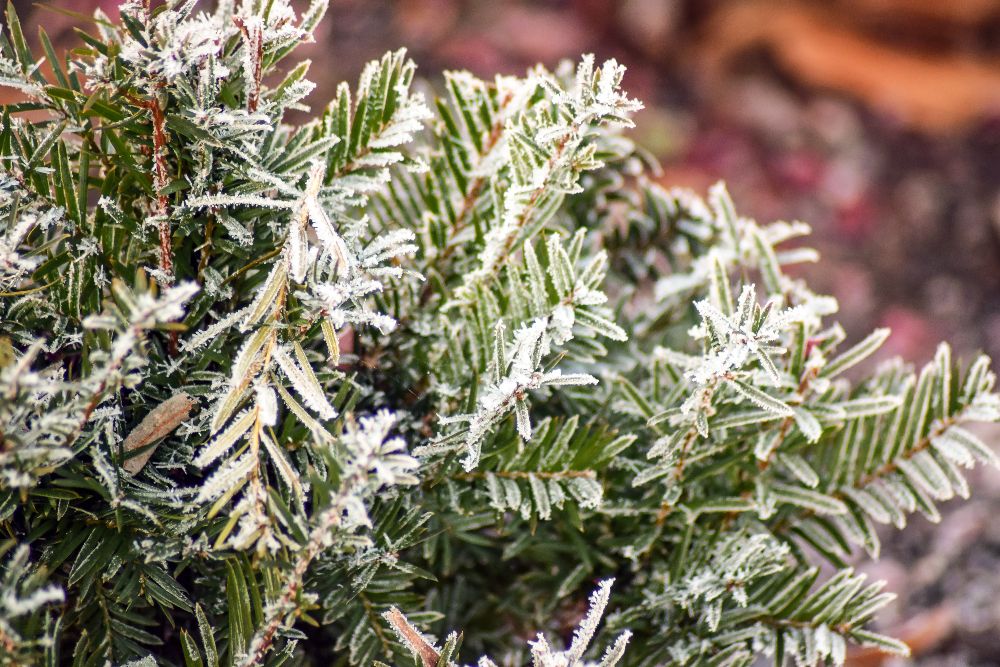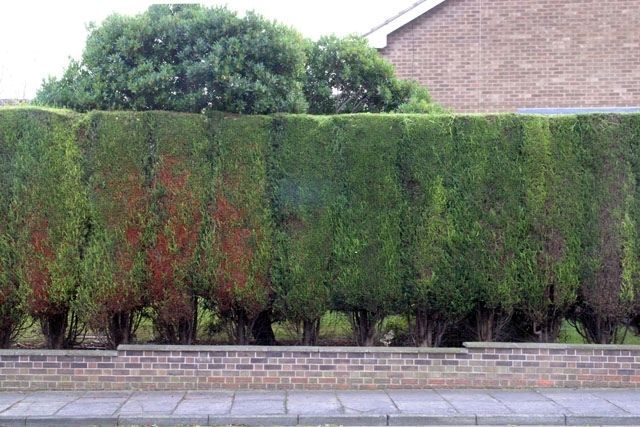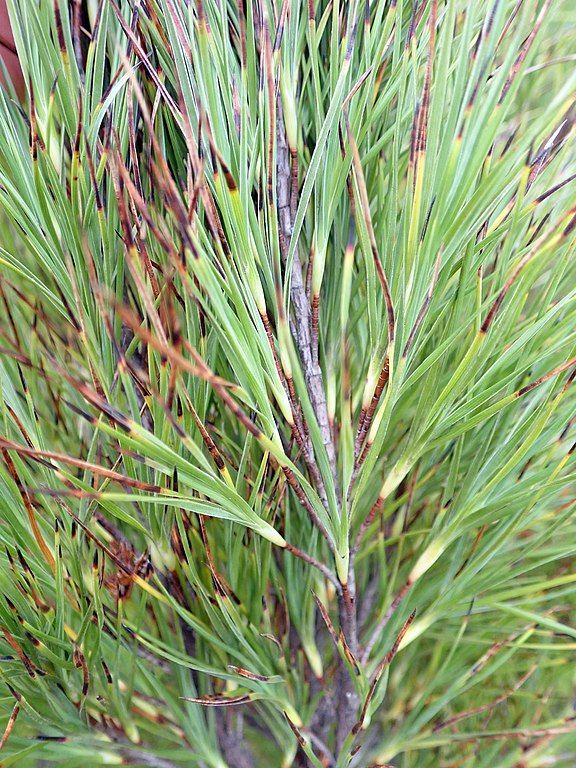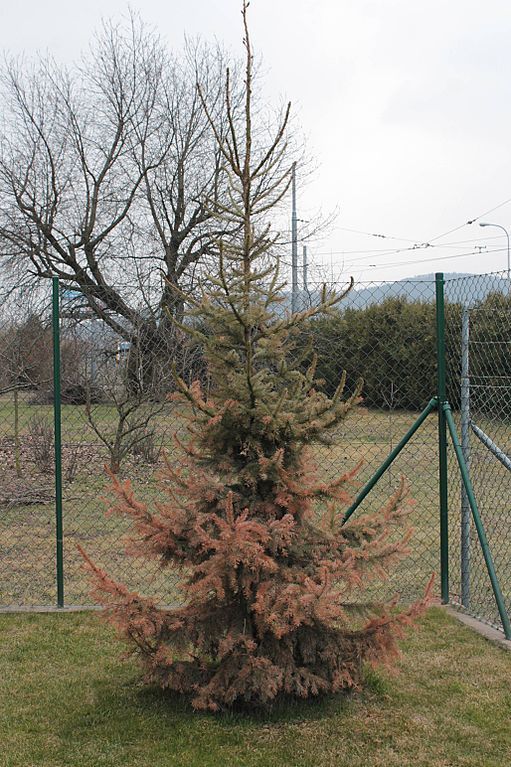
Nothing screams neglect like a brown conifer. Watching this vibrant evergreen fade to pale brown is heart breaking. Luckily, there are many things you can do to prevent your conifers turning brown. Read on to find out exactly how to revive brown conifers…
How To Revive a Dying Conifer
1. Water Them in Summer
Your conifer needs watering when the weather is hot. This may seem obvious (all plants need water!), but it’s easy to forget to water your conifer, thinking that rain will have this covered already.
Dried-out conifers are particularly common if you’ve plopped them in a pot. The soil in pots dries out quickly because the conifer can’t draw resources from anywhere like it can when grown in the ground.
So keep that soil moist! That means watering as often as twice daily in the height of summer!
READ NEXT: The Best Expandable Garden Hoses
2. Avoid Winter Browning with Native Conifers
Conifers lose moisture through their spiky needles, leaving them prone to dehydration. So, they really rely on root-sourced moisture. This becomes a problem on frosty days, as frozen soil doesn’t give out water. Conifers’ needles can brown as a result.
This whole process is called winter browning. Don’t worry; conifers often recover when the weather warms up. But choosing conifers native to your climate can prevent winter browning or lessen any damage caused.
3. Change the Compost
This leads us nicely onto compost type. Conifers need moisture-retentive compost to keep their water levels up. Unfortunately, regular potting compost won’t suffice.
Conifers thrive on a soil-based mix. Boost your soil with composted leaf mould or leaf bark, as these are excellent at retaining water. They also provide air pockets that enable the air to circulate more freely.
Check-in with a nearby garden centre to see what compost mix they recommend.
4. Give Conifers More Space
Conifers can get big, so they like space. Although growing conifers in pots may suit you better, they’re happiest when planted in the ground. It all comes down to their roots – if their roots don’t have space to expand, this can affect the overall health of the plants.
And conifers use the natural resources in the ground to fuel their growth. The nutrients aren’t readily available in pots unless you’re frequently fertilising!
5. Pick the Perfect Spot
Brown needles are standard in wind-scorched conifers. To protect your conifers, place them in a sheltered spot. This will stop them from getting pummelled by strong winds.
And give them access to some sunlight! Conifers will do well in full sun or partial shade, but they may begin to look sorry for themselves if you place them in full shade.
6. Allow for Adequate Drainage
Yes, conifers need a good amount of moisture. But you don’t want to keep the roots permanently soaked! It’s a tricky balance, right?
Planting your conifers in well-drained soil will keep them happy and healthy. If you’ve chosen to pot your conifer, pick a container with enough drainage holes. If your conifer is growing in the ground, provide suitable irrigation.
7. Pump Your Conifers Full of Nutrients
Conifers need nutrients, too. Give your conifers a good feed as winter draws to a close. Then, mulch the top layer of soil.
Doing this will give your conifers that nutrient boost they need to burst with new growth the following growing season. Go to a garden centre and pick out a feed specific to conifers. Then, you can’t go wrong!
You only have to feed your conifers once a year. Overfeeding can cause problems of its own, so refrain from frequent feeding.
8. Cut Back on Pruning
Now, strap in because this is a big one. I think it’s safe to say most gardeners enjoy pruning. Hacking at an overgrown conifer can be all the stress relief you need.
Alas, this doesn’t work for our poor conifers. Conifers don’t grow on old wood, so pruning only new growth is essential. Aggressive pruning that hacks off old wood can traumatise your conifers and cause irreparable damage.
Check the needles to ensure you’re cutting new growth only. The outer layer of needles will be a luscious green, as they have access to lots of sunlight. If you part these needles and look further into the plant, you’ll notice the needles are duller or tinged with brown. These are older needs that should not be pruned.
Prune your conifer tree’s small branches using your hands, and cut away the tips of outer branches and dead, old branches gently. But make sure you do this at the right time of year! More on that next.
9. Pick Your Pruning Time Wisely
Another biggy is picking when to prune your conifers. Refrain from trimming your conifers when the weather is hot and dry. On these days, your conifers are already under stress because they’re trying to grapple with having less moisture.
The same applies to autumn pruning. Resources are low at this time, so your conifers will have difficulty recovering from pruning.
Instead, give your conifers a light prune up to 3 times between April and August.
10. Protect Confiders From Root Disease
Root disease is a conifer killer. These diseases come about when your conifers have wounds close to their base. Root disease can also invade the roots!
Things to look out for are needles dying and falling off, branches dropping for seemingly no reason, and bark peeling. If your conifers have a terrible case of root rot, they may be unsteady. You may need to replace them if this is the case.
11. Stop Needle Blight in its Tracks
Needle Blight hits the needles and tips of the branches particularly hard. You can identify this disease as it creates brown spots on these areas. It’ll start at the lower limbs but progress to the whole plant if not kept in check.
Treat with a copper fungicide spray.
12. Save Conifers from Needle Cast
Needle Cast encompasses diseases that cause conifers to shed their needles. Conifers suffering from Needle Cast will experience needle discolouration. First, the lush green needles will develop yellow spots, then fade to brown.
Fruiting bodies may also be visible on the needles, so look out for these. Treat your conifers against Needle Cast with fungicide.
13. Act Quickly Against Pine Needle Scale
Insects can also pose a problem for conifers. One such insect is the Pine Needle Scale. It seems that conifers are irresistible to these insects – they love to chomp and chomp until they destroy any life the plant had.
Signs of Pine Needle Scale are yellowing needles. These will progress from yellow to brown, then they’ll dop off.
When it comes to insect infestation, it’s vital to act fast. Combat this pest with insecticide as soon as you notice it.
14. Attack Aphids
Aphids attack conifers, so you need to know how to fight back. Cypress aphids are the most common perpetrator, causing approximately half of the cases of browning conifers.
The first indicator of Cypress aphids is the appearance of dark, soot-coloured mould. If you worry aphids are causing your browning conifers, treat them with a pesticide.
15. Stop Spruce Spider Mite
Spruce Spider Mite is another pest that affects conifers. It turns up in spring and autumn when the weather is mild. Luckily, Spruce Spider Mite is easily detectable – it leaves silk thread clues behind.
Just spray with an insecticide on the months this pest is likely to appear. This will keep your conifer looking lively!
16. Protect from Pine Mountain Beetles
The last of the irritating insects is Pine Mountain Beetles. These lay eggs in gaps between your conifer’s bark and its trunk. They then hijack all of the conifer’s nutrients and moisture, leaving little behind for the plant.
Unfortunately, this is a subtle pest with no immediate negative impact on the plant. However, as soon as the eggs hatch, the needles will begin to brown, and your conifer will be dead within the year.
17. Fight Fungal Infections
Fungal infections can seize the whole plant, not just its needles. But the needles may be the first sign of a problem.
Coryneum canker infection may cause bark blistering, whereby tumours release a yellow liquid. This blistering will begin on lower branches and work its way up. Western Red Cedar and Leylandii Cypress are most susceptible to this particular fungal infection.
Pestalotiopsis dieback is another common fungus that affects conifers. Keep a watchful eye for this fungus during wet summers, and pay particular attention to your conifers that are already showing signs of dilapidation – this pest targets those trees.
If you see mini black fruiting bodies on your conifers’ foliage, it could well be Pestalotiopsis dieback!
18. Sort Out Road Salt Damage
Our roads are absolutely covered in salt, particularly in winter when road gritting is essential. If your conifers are positioned close to a road, they may be exposed to high salt levels, particularly on wet days when cars splash salty puddles.
Conifers that are sitting in overly-salty soil can turn brown. Although you can’t remove the salt from the road, there are some things you can do to prevent the adverse effects of salt:
- Water your conifers frequently – this can help to flush out the salt
- Prune them (while sticking to the guidance above)
- Space your conifers, so they’re not too close together – this allows adequate airflow, reducing the risk of infections.
Brown Conifers? Not anymore!
“Why is my conifer going brown?” is a simple question, yet the answer often seems elusive. Not anymore! Try out one or more of the 18 ways to revive brown conifers listed above. Your conifer will be back to its vibrant green self before you know it!
Where to go next?
Our top recommended confier fertiliser is GREEN24 Conifers Plant Food & Liquid Fertilizer. It’s very good at reversing browning and bringing your confiers back to life. Check the latest price here.
